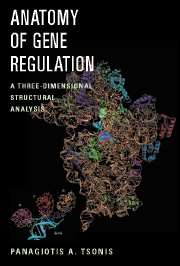Book contents
- Frontmatter
- Contents
- Preface
- 1 A General Introduction to 3-D Structures
- 2 The Higher Organization of the Genome
- 3 Structure of DNA and Telomeres
- 4 DNA Replication
- 5 Transcription in Prokaryotes
- 6 Transcription in Eukaryotes
- 7 Splicing
- 8 Modifications of mRNA
- 9 Compartmentalization of Transcription
- 10 Protein Synthesis
- 11 The Birth and Death of Proteins
- Further Reading and References
- Index
6 - Transcription in Eukaryotes
Published online by Cambridge University Press: 24 May 2010
- Frontmatter
- Contents
- Preface
- 1 A General Introduction to 3-D Structures
- 2 The Higher Organization of the Genome
- 3 Structure of DNA and Telomeres
- 4 DNA Replication
- 5 Transcription in Prokaryotes
- 6 Transcription in Eukaryotes
- 7 Splicing
- 8 Modifications of mRNA
- 9 Compartmentalization of Transcription
- 10 Protein Synthesis
- 11 The Birth and Death of Proteins
- Further Reading and References
- Index
Summary
PRIMER Transcription in eukaryotes is more complicated than in prokaryotes. In eukaryotes, there must be tissue-specific gene transcription because many different cell types need to be created. Therefore, transcription must be selective in different cells and tissues. This selectivity is possible by the cell- or tissue-specific transcriptional factors. These factors can bind sequences present in promoters or enhancers of genes that will be specifically expressed in a particular cell type. The basal transcriptional machinery, which is assembled at the promoters of genes and is responsible for the recruitment of RNA polymerase, is also more complex in eukaryotes. In addition, in eukaryotes there are three RNA polymerases, each one transcribing a particular set of genes.
As in Chapter 5, I begin this chapter by presenting the 3-D structure of eukaryotic RNA polymerase II, which transcribes the genes that produce mRNAs. A comparison is made with the prokaryotic RNA polymerase. I then describe the factors that constitute the basal transcriptional machinery, their 3-D structure, and their interaction with DNA, RNA polymerase II, and each other. The reader should be able to obtain a very informative picture of this assembly that leads to the initiation of eukaryotic transcription. I then proceed to the regulation of transcription. As I mentioned earlier, regulation of transcription is unique for each of the more than 200 different cell types. Covering everything we know about regulation is, therefore, overwhelming.
- Type
- Chapter
- Information
- Anatomy of Gene RegulationA Three-dimensional Structural Analysis, pp. 104 - 152Publisher: Cambridge University PressPrint publication year: 2003



